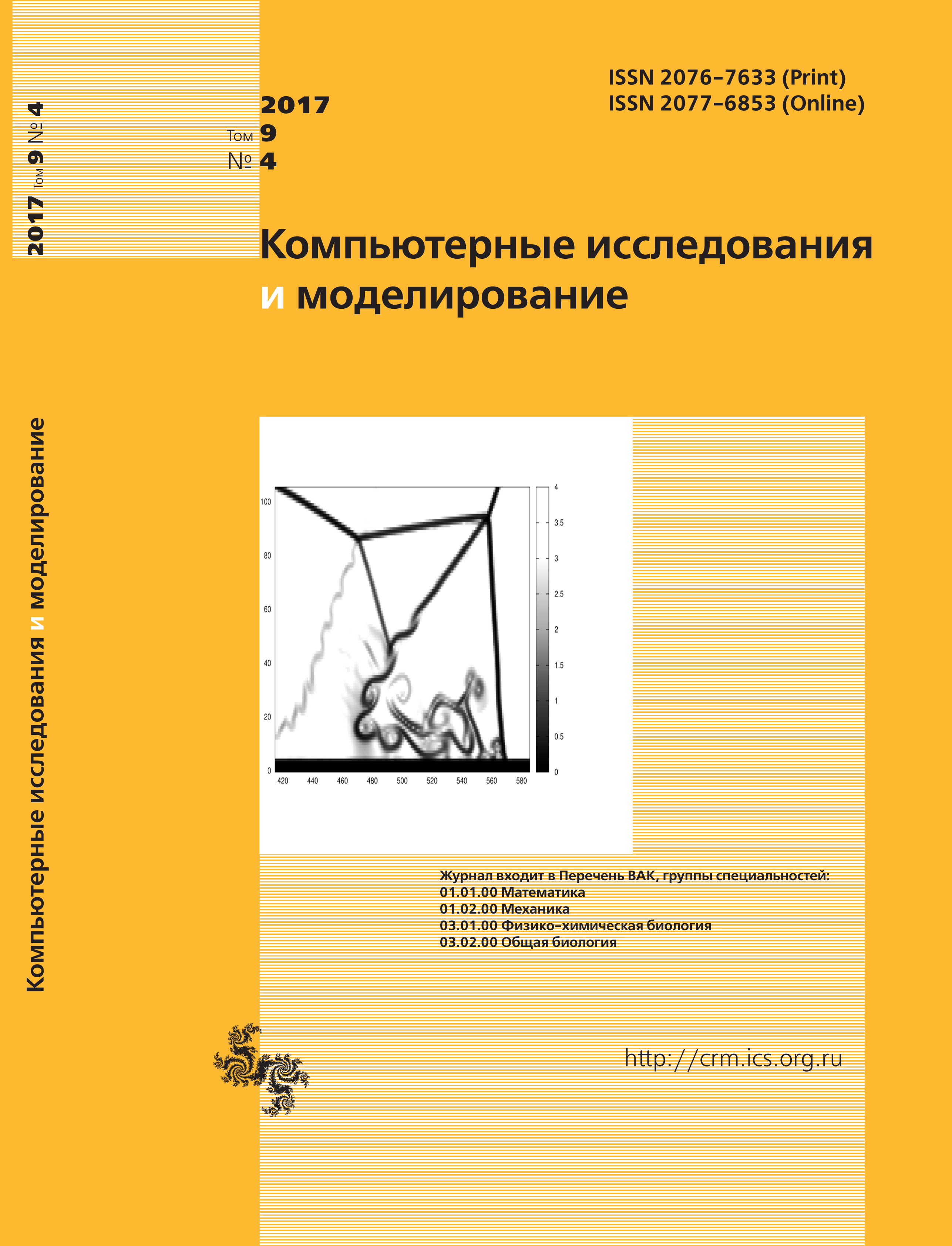All issues
- 2025 Vol. 17
- 2024 Vol. 16
- 2023 Vol. 15
- 2022 Vol. 14
- 2021 Vol. 13
- 2020 Vol. 12
- 2019 Vol. 11
- 2018 Vol. 10
- 2017 Vol. 9
- 2016 Vol. 8
- 2015 Vol. 7
- 2014 Vol. 6
- 2013 Vol. 5
- 2012 Vol. 4
- 2011 Vol. 3
- 2010 Vol. 2
- 2009 Vol. 1
The stabilizing role of fish population structure under the influence of fishery and random environment variations
We study the influence of fishery on a structured fish population under random changes of habitat conditions. The population parameters correspond to dominant pelagic fish species of Far-Eastern seas of the northwestern part of the Pacific Ocean (pollack, herring, sardine). Similar species inhabit various parts of the Word Ocean. The species body size distribution was chosen as a main population feature. This characteristic is easy to measure and adequately defines main specimen qualities such as age, maturity and other morphological and physiological peculiarities. Environmental fluctuations have a great influence on the individuals in early stages of development and have little influence on the vital activity of mature individuals. The fishery revenue was chosen as an optimality criterion. The main control characteristic is fishing effort. We have chosen quadratic dependence of fishing revenue on the fishing effort according to accepted economic ideas stating that the expenses grow with the production volume. The model study shows that the population structure ensures the increased population stability. The growth and drop out of the individuals’ due to natural mortality smoothens the oscillations of population density arising from the strong influence of the fluctuations of environment on young individuals. The smoothing part is played by diffusion component of the growth processes. The fishery in its turn smooths the fluctuations (including random fluctuations) of the environment and has a substantial impact upon the abundance of fry and the subsequent population dynamics. The optimal time-dependent fishing effort strategy was compared to stationary fishing effort strategy. It is shown that in the case of quickly changing habitat conditions and stochastic dynamics of population replenishment there exists a stationary fishing effort having approximately the same efficiency as an optimal time-dependent fishing effort. This means that a constant or weakly varying fishing effort can be very efficient strategy in terms of revenue.
Copyright © 2017 Abakumov A.I., Izrailsky Y.G.
- , , , . Mode change in the dynamics of exploited limited population with age structure. // Nonlinear Dynamics. — 2018. — V. 94, no. 2. — P. 827. DOI: 10.1007/s11071-018-4396-6
Indexed in Scopus
Full-text version of the journal is also available on the web site of the scientific electronic library eLIBRARY.RU
The journal is included in the Russian Science Citation Index
The journal is included in the RSCI
International Interdisciplinary Conference "Mathematics. Computing. Education"







